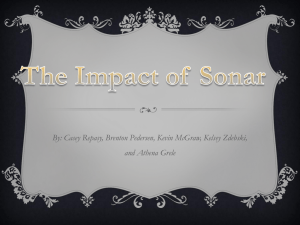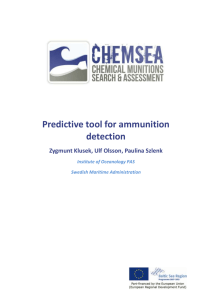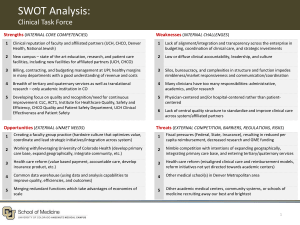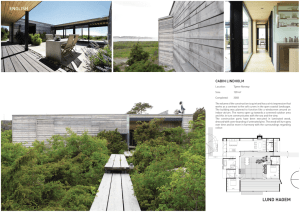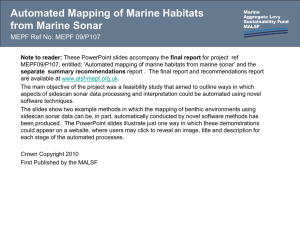Encoding Robotic Sensor States for Q
advertisement
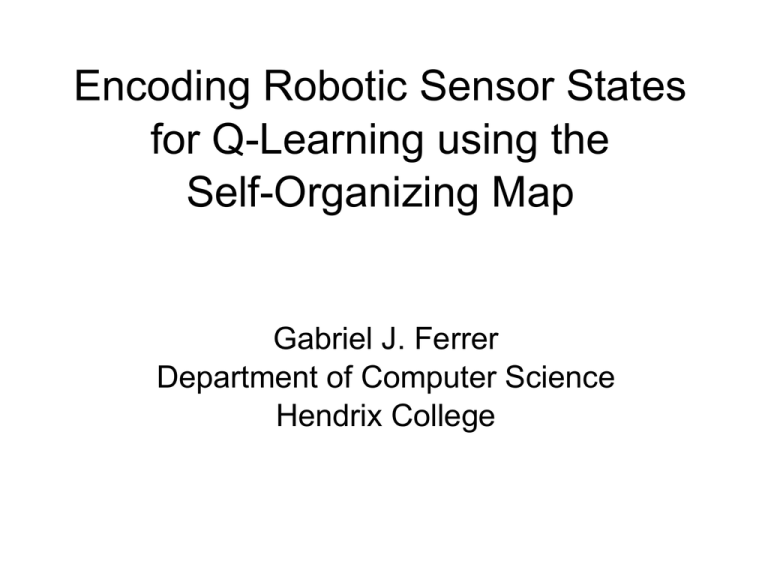
Encoding Robotic Sensor States for Q-Learning using the Self-Organizing Map Gabriel J. Ferrer Department of Computer Science Hendrix College Outline Statement of Problem Q-Learning Self-Organizing Maps Experiments Discussion Statement of Problem Goal Make robots do what we want Minimize/eliminate programming Proposed Solution: Reinforcement Learning Specify desired behavior using rewards Express rewards in terms of sensor states Use machine learning to induce desired actions Target Platform Lego Mindstorms NXT Robotic Platform Experimental Task Drive forward Avoid hitting things Q-Learning Table of expected rewards (“Q-values”) Indexed by state and action Algorithm steps Calculate state index from sensor values Calculate the reward Update previous Q-value Select and perform an action Q(s,a) = (1 - α) Q(s,a) + α (r + γ max(Q(s',a))) Q-Learning and Robots Certain sensors provide continuous values Sonar Motor encoders Q-Learning requires discrete inputs Group continuous values into discrete “buckets” [Mahadevan and Connell, 1992] Q-Learning produces discrete actions Forward Back-left/Back-right Creating Discrete Inputs Basic approach Discretize continuous values into sets Combine each discretized tuple into a single index Another approach Self-Organizing Map Induces a discretization of continuous values [Touzet 1997] [Smith 2002] Self-Organizing Map (SOM) 2D Grid of Output Nodes Each output corresponds to an ideal input value Inputs can be anything with a distance function Activating an Output Present input to the network Output with the closest ideal input is the “winner” Applying the SOM Each input is a vector of sensor values Sonar Left/Right Bump Sensors Left/Right Motor Speeds Distance function is sum-of-squared-differences SOM Unsupervised Learning • Present an input to the network • Find the winning output node • Update ideal input for winner and neighbors – weightij = weightij + (α * (inputij – weightij)) • Neighborhood function e d 2 2c 2 Experiments Implemented in Java (LeJOS 0.85) Each experiment 240 seconds (800 Q-Learning iterations) 36 States Three actions Both motors forward Left motor backward, right motor stopped Left motor stopped, right motor backward Rewards Either bump sensor pressed: 0.0 Base reward: 1.0 if both motors are going forward 0.5 otherwise Multiplier: Sonar value greater than 20 cm: 1 Otherwise, (sonar value) / 20 Parameters Discount (γ): 0.5 Learning rate (α): 1/(1 + (t/100)), t is the current iteration (time step) Used for both SOM and Q-Learning [Smith 2002] Exploration/Exploitation Epsilon = α/4 Probability of random action Selected using weighted distribution Experimental Controls Q-Learning without SOM Qa States Current action (1-3) Current bumper states Quantized sonar values (0-19 cm; 20-39; 40+) Qb States Current bumper states Quantized sonar values (9) (0-11 cm…; 84-95; 96+) SOM Formulations 36 Output Nodes Category “a”: Length-5 input vectors Motor speeds, bumper values, sonar value Category “b”: Length-3 input vectors Bumper values, sonar value All sensor values normalized to [0-100] SOM Formulations QSOM Based on [Smith 2002] Gaussian Neighborhood Neighborhood size is one-half SOM width QT Based on [Touzet 1997] Learning rate is fixed at 0.9 Neighborhood is immediate Manhattan neighbors Neighbor learning rate is 0.4 Quantitative Results Qa Qb QSOMa QSOMb QTa QTb Mean 607.97 578.91 468.86 534.49 456.19 545.61 StDv 81.92 76.95 39.39 160.41 85.07 57.98 Median 608.75 667.5 485.11 587.64 442.62 560.77 Min 506.47 528.67 410.2 354.25 378.72 481.55 Max 723 540.55 495 661.59 547.22 594.5 Mean/It 0.76 0.72 0.59 0.67 0.57 0.68 StDv/It 0.1 0.05 0.2 0.11 0.07 0.1 Qualitative Results QSOMa Motor speeds ranged from 2% to 50% Sonar values stuck between 90% and 94% QSOMb Sonar values range from 40% to 95% Best two runs arguably the best of the bunch Very smooth SOM values in both cases Qualitative Results QTa Sonar values ranged from 10% to 100% Still a weak performer on average Best performer similar to QTb QTb Developed bump-sensor oriented behavior Made little use of sonar Highly uneven SOM values in both cases Experimental Area First Movie QSOMb Strong performer (Reward: 661.89) Minimum sonar value: 43.35% (110 cm) Second Movie Also QSOMb Typical bad performer (Reward: 451.6) Learns to avoid by always driving backwards Baseline “not-forward” reward: 400.0 Minimum sonar value: 57.51% (146 cm) Hindered by small filming area Discussion Use of SOM on NXT can be effective More research needed to address shortcomings Heterogeneity of sensors is a problem Need to try NXT experiments with multiple sonars Previous work involved homogeneous sensors Approachable by undergraduate students Technique taught in junior/senior AI course

